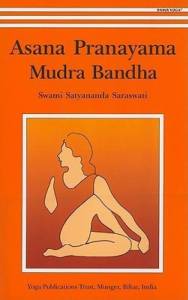
Breath of Life
Everyone hopes to enjoy a long, active and useful life, free from disease and immune to the damaging effects of nervous stress and tensions. In this light yoga has something unique to offer and therefore it is most important that everyone knows and practises certain pranayamas and asanas on a daily basis.
The system of hatha yoga has undergone thorough scientific investigation in European, Communist and American countries. Pranayama which was once translated as ‘breathing exercises’ is now recognized by scientists throughout the world as a means of invigorating, enhancing and accelerating the revitalizing processes in the body….
To read the full article on breath of life you may visit the link given: http://www.yogamag.net

Before embarking on the practices of pranayama & pratyahara, a yoga aspirant must first of all prepare the entire nervous system, respiratory system and the emotional personality for the changes that would come with regular practice of pranayama.It is similar to taking a boat into the ocean when the ocean in roaring in a cyclone. A wise person would wait for the high & rough sea to soften & then they would set the sail.
In the basic course through a systematic training, such a foundation is laid carefully and patiently. The depleted state of prana is changed. One can have access to the higher source of prana and irrigate the personality with the increased level of prana. This leaves the body and mind in a better as well are ready state to start the actual practices of pranayama.
- 99% of adults have lost their natural ability to breathe in to their full lung’s capacity.
- In his book Prana Pranayama Prana Vidya, Swami Niranjan explains the mechanics of breathing.
- A healthy adult male should be able to inhale as much as 4.5 ltrs of air in one inhalation.
- However most of them are able to inhale only 0.5 ltrs in one inhalation.
- The reason is very simple, they have forgotten the right way to breathe.
- During the basic course, each participant is taught to first of all breathe properly and is then taught to expand and increase the breathing capacity
- Abdominal breathing
- Yogic breathing
- interrupted breathing
- Nadi Sodhana pranayama
- Bramhari Pranayama
These practices are introduced during a basic course.

Abdominal Breathing
We have explained in the earlier posts about the connection between body-prana-mind. Since the states of mind have a close relationship with the way you breathe, it is of utmost importance for one to breathe correctly. Abdominal breathing cannot be done as a staple practice forever. It is necessary to start with abdominal breathing, practice it for a necessary period, till wrong breathing is corrected.
Yogic Breathing
Once mistakes in breathing function is corrected, one has to develop the ability to breathe fully. Yogic breathing helps one to gradually improve the lung function.
Secondly after breathing is corrected, the next important development would be to improve the breath capacity. The breathing practices that are covered during this course are preliminary practices that will help one to improve all the four steps of pranayama (inhalation:retention:exhalation:external retention).
Interrupted Breathing
Pranayama can be perfected after developing capacity to inhale to full, capacity to retain the breath for specific duration, exhale to empty lungs, restrain breath outside after exhalation. These processes, have a deep involvement of muscles, nervous system, cardiac system. The capacity should be developed systematically over a period of time and there is absolutely no scope to fast track this or bypass it.
Interrupted breathing practices, which are unique to Satyananda Yoga teaching tradition, helps practitioners to improve all quadrants of their breathing functions.
HASTHA UTTANASANA
A simple yet powerful practice, that effectively improves basic breathing ability! Unlike other breathing practices, this practice utilizes a combination of movements with coordinated deep breathing.
It promotes complete breathing, vertical breathing thus allowing efficient exchange of air and removal of stale and residual air from the lung! Hastha Uttanasana also promotes improved blood circulation to the brain!
To know more about the practices in details you can read this book published by Yoga Publications Trust

